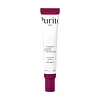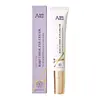What's inside
What's inside
 Key Ingredients
Key Ingredients

 Benefits
Benefits

 Concerns
Concerns

 Ingredients Side-by-side
Ingredients Side-by-side

Water
Skin ConditioningCaprylic/Capric Triglyceride
MaskingGlycerin
HumectantCetearyl Alcohol
EmollientPropanediol
SolventPentaerythrityl Tetraethylhexanoate
EmollientButylene Glycol
HumectantHydrangea Macrophylla Leaf Extract
Skin ConditioningBakuchiol
AntimicrobialHyaluronic Acid
HumectantCamellia Sinensis Leaf Extract
AntimicrobialSodium Hyaluronate
HumectantRetinol
Skin ConditioningAllantoin
Skin ConditioningArachidyl Alcohol
EmollientGlyceryl Stearate
EmollientTocopherol
AntioxidantBehenyl Alcohol
EmollientCarbomer
Emulsion StabilisingSodium Acrylate/Sodium Acryloyldimethyl Taurate Copolymer
Emulsion StabilisingTromethamine
BufferingCetearyl Glucoside
EmulsifyingCaprylyl Glycol
EmollientPolyisobutene
Arachidyl Glucoside
EmulsifyingHydroxyacetophenone
AntioxidantPentylene Glycol
Skin ConditioningHydroxyethyl Acrylate/Sodium Acryloyldimethyl Taurate Copolymer
Emulsion StabilisingDipotassium Glycyrrhizate
HumectantPolyglyceryl-10 Laurate
Skin ConditioningAllium Sativum Bulb Extract
Skin ConditioningGlyceryl Stearate Se
EmulsifyingSorbitan Stearate
Emulsifying1,2-Hexanediol
Skin ConditioningEthylhexylglycerin
Skin ConditioningAdenosine
Skin ConditioningDisodium EDTA
Caprylyl/Capryl Glucoside
CleansingSorbitan Oleate
EmulsifyingRutin
AntioxidantCurcuma Longa Root Extract
MaskingVitis Vinifera Vine Extract
Skin ConditioningSorbitan Isostearate
EmulsifyingPaeonia Suffruticosa Root Extract
Skin ProtectingGlucose
HumectantSclerotium Gum
Emulsion StabilisingXanthan Gum
EmulsifyingWater, Caprylic/Capric Triglyceride, Glycerin, Cetearyl Alcohol, Propanediol, Pentaerythrityl Tetraethylhexanoate, Butylene Glycol, Hydrangea Macrophylla Leaf Extract, Bakuchiol, Hyaluronic Acid, Camellia Sinensis Leaf Extract, Sodium Hyaluronate, Retinol, Allantoin, Arachidyl Alcohol, Glyceryl Stearate, Tocopherol, Behenyl Alcohol, Carbomer, Sodium Acrylate/Sodium Acryloyldimethyl Taurate Copolymer, Tromethamine, Cetearyl Glucoside, Caprylyl Glycol, Polyisobutene, Arachidyl Glucoside, Hydroxyacetophenone, Pentylene Glycol, Hydroxyethyl Acrylate/Sodium Acryloyldimethyl Taurate Copolymer, Dipotassium Glycyrrhizate, Polyglyceryl-10 Laurate, Allium Sativum Bulb Extract, Glyceryl Stearate Se, Sorbitan Stearate, 1,2-Hexanediol, Ethylhexylglycerin, Adenosine, Disodium EDTA, Caprylyl/Capryl Glucoside, Sorbitan Oleate, Rutin, Curcuma Longa Root Extract, Vitis Vinifera Vine Extract, Sorbitan Isostearate, Paeonia Suffruticosa Root Extract, Glucose, Sclerotium Gum, Xanthan Gum
Water
Skin ConditioningBakuchiol
AntimicrobialCaffeine
Skin ConditioningArginine/Lysine Polypeptide
Skin ConditioningAcetyl Hexapeptide-8
HumectantRetinol
Skin ConditioningCollagen
MoisturisingPolyglyceryl-2 Stearate
EmulsifyingCetearyl Alcohol
EmollientCetearyl Glucoside
EmulsifyingHydrogenated Coco-Glycerides
EmollientIsononyl Isononanoate
EmollientHydrogenated Polyisobutene
EmollientTocopheryl Acetate
AntioxidantEthylhexyl Palmitate
EmollientCarbomer
Emulsion StabilisingButylene Glycol
HumectantSodium Hyaluronate
HumectantHydrolyzed Sodium Hyaluronate
Skin ConditioningBeta-Glucan
Skin ConditioningAllantoin
Skin ConditioningPanthenol
Skin ConditioningSodium Acrylate/Sodium Acryloyldimethyl Taurate Copolymer
Emulsion StabilisingArginine
MaskingGlyceryl Glucoside
HumectantEquisetum Arvense Extract
AstringentGlycyrrhiza Glabra Root Extract
Bleaching1,2-Hexanediol
Skin ConditioningPentylene Glycol
Skin ConditioningWater, Bakuchiol, Caffeine, Arginine/Lysine Polypeptide, Acetyl Hexapeptide-8, Retinol, Collagen, Polyglyceryl-2 Stearate, Cetearyl Alcohol, Cetearyl Glucoside, Hydrogenated Coco-Glycerides, Isononyl Isononanoate, Hydrogenated Polyisobutene, Tocopheryl Acetate, Ethylhexyl Palmitate, Carbomer, Butylene Glycol, Sodium Hyaluronate, Hydrolyzed Sodium Hyaluronate, Beta-Glucan, Allantoin, Panthenol, Sodium Acrylate/Sodium Acryloyldimethyl Taurate Copolymer, Arginine, Glyceryl Glucoside, Equisetum Arvense Extract, Glycyrrhiza Glabra Root Extract, 1,2-Hexanediol, Pentylene Glycol
Ingredients Explained
These ingredients are found in both products.
Ingredients higher up in an ingredient list are typically present in a larger amount.
1,2-Hexanediol is a synthetic liquid and another multi-functional powerhouse.
It is a:
- Humectant, drawing moisture into the skin
- Emollient, helping to soften skin
- Solvent, dispersing and stabilizing formulas
- Preservative booster, enhancing the antimicrobial activity of other preservatives
Allantoin is a soothing ingredient known for its protective and moisturizingg properties. Because of this, it is often added to products with strong active ingredients.
Studies show higher concentrations of this ingredient can promote wound healing.
Though it can be derived from the comfrey plant, allantoin is produced synthetically for cosmetic products to ensure purity.
Learn more about AllantoinBakuchiol is a plant-derived antioxidant (it's vegan!). It is often called the replacement for retinol although it is not part of the same family.
It has similar effects as retinol: skin smoothing, reducing discoloration, and preventing wrinkles. It does not cause as much irritation as traditional retinoids.
Bakuchiol works by breaking down free radicals and stimulating collagen production in skin.
Combining bakuchiol with retinol will not have adverse side effects. Studies show using them will just boost the benefits. Bakuchiol is also found to help stabilize retinol.
While bakuchiol does not make the skin more sun sensitive, we recommend wearing SPF on a daily basis.
Read more about traditional retinol
Learn more about BakuchiolButylene Glycol (or BG) is used within cosmetic products for a few different reasons:
Overall, Butylene Glycol is a safe and well-rounded ingredient that works well with other ingredients.
Though this ingredient works well with most skin types, some people with sensitive skin may experience a reaction such as allergic rashes, closed comedones, or itchiness.
Learn more about Butylene GlycolCarbomer is a polymer of acrylic acid. Its main role is to create a gel consistency.
A high amount of carbomer can cause pilling or balling up of products. Don't worry, most products contain 1% or less of carbomer.
Cetearyl alcohol is a mixture of two fatty alcohols: cetyl alcohol and stearyl alcohol. It is mainly used as an emulsifier. Emulsifiers help prevent the separation of oils and products. Due to its composition, it can also be used to thicken a product or help create foam.
Cetearyl alcohol is an emollient. Emollients help soothe and hydrate the skin by trapping moisture.
Studies show Cetearyl alcohol is non-toxic and non-irritating. The FDA allows products labeled "alcohol-free" to have fatty alcohols.
This ingredient is usually derived from plant oils such as palm, vegetable, or coconut oils. There is debate on whether this ingredient will cause acne.
Due to the fatty acid base, this ingredient may not be Malassezia folliculitis safe.
Learn more about Cetearyl AlcoholCetearyl Glucoside is a surfactant and emulsifier. It can be produced from synthetic of natural sources of cetearyl alcohol and glucose.
Emulsifiers help prevent ingredients from separating, such as oils and waters. It can also be used to enhance the texture of products.
As a surfactant, Cetearyl Glucoside helps during the cleansing process. By gathering all the dirt and oils, it allows these molecules to be washed away easily.
Learn more about Cetearyl GlucosidePentylene glycol is typically used within a product to thicken it. It also adds a smooth, soft, and moisturizing feel to the product. It is naturally found in plants such as sugar beets.
The hydrophilic trait of Pentylene Glycol makes it a humectant. As a humectant, Pentylene Glycol helps draw moisture from the air to your skin. This can help keep your skin hydrated.
This property also makes Pentylene Glycol a great texture enhancer. It can also help thicken or stabilize a product.
Pentylene Glycol also acts as a mild preservative and helps to keep a product microbe-free.
Some people may experience mild eye and skin irritation from Pentylene Glycol. We always recommend speaking with a professional about using this ingredient in your routine.
Pentylene Glycol has a low molecular weight and is part of the 1,2-glycol family.
Learn more about Pentylene GlycolRetinol is a gold-standard ingredient for anti-aging. It is a form of Vitamin A and belongs to the class of retinoids that also includes tretinoin.
Why is retinol famous?
It has the most scientific studies backing up its skin benefits out of all the non-prescription ingredients.
Retinol is proven to:
This is why retinol is effective at removing wrinkles, fading dark spots, treating acne, and reducing the appearance of pores.
Studies show retinol is less effective when exposed to UV. Be sure to look for appropriate packaging to keep your retinol potent (similar to Vitamin C).
Using retinol or any retinoids will increase sun-sensitivity in the first few months. Though studies show retinoids increase your skin's natural SPF with continuous use, it is best to always wear sunscreen and sun-protection.
We recommend speaking with a medical professional about using this ingredient during pregnancy.
Retinol may cause irritation in some people, so be sure to patch test. Experts recommend 'ramping up' retinol use: start using this ingredient once a week and work up to using it daily.
Read about Tretinoin
Learn more about RetinolThis long ingredient is a copolymer of sodium acrylate and sodium acryloyldimethyl taurate monomers.
It is used to help stabilize other ingredients and create a thicker gel-like texture.
Emulsifiers prevent oils and waters from separating.
Learn more about Sodium Acrylate/Sodium Acryloyldimethyl Taurate CopolymerSodium Hyaluronate is hyaluronic acid's salt form. It is commonly derived from the sodium salt of hyaluronic acid.
Like hyaluronic acid, it is great at holding water and acts as a humectant. This makes it a great skin hydrating ingredient.
Sodium Hyaluronate is naturally occurring in our bodies and is mostly found in eye fluid and joints.
These are some other common types of Hyaluronic Acid:
Learn more about Sodium HyaluronateWater. It's the most common cosmetic ingredient of all. You'll usually see it at the top of ingredient lists, meaning that it makes up the largest part of the product.
So why is it so popular? Water most often acts as a solvent - this means that it helps dissolve other ingredients into the formulation.
You'll also recognize water as that liquid we all need to stay alive. If you see this, drink a glass of water. Stay hydrated!
Learn more about Water